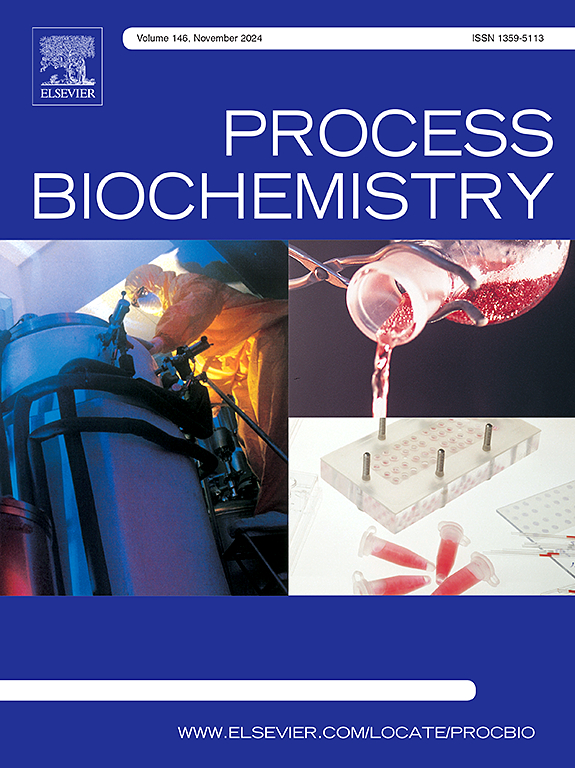Sustainable production of polyhydroxybutyrate biopolymers and cellulose microfibers from sugarcane waste
IF 3.7
3区 生物学
Q2 BIOCHEMISTRY & MOLECULAR BIOLOGY
引用次数: 0
Abstract
Thermochemically pretreating sugarcane bagasse (SCB) and sugarcane leaves (SCL) at 121 °C generated fermentable sugars that were transformed into polyhydroxybutyrate (PHB) by PHB-producing bacteria. The SCB hydrolysate contained reducing sugars (25.0–26.1 g/L), which were mainly xylose (16.4–17.6 g/L) and glucose (7.8–8.0 g/L). The bacteria used glucose more effectively than xylose and glycerol did, as the maximum PHB contents (% cell dry weight) observed with glucose, xylose, and glycerol were 69.3 %, 16.2 %, and 21.4 %, respectively. After 72 h of incubation, Burkholderia cepacia ASL22 and Priestia megaterium ASL11, KKR5, and SRB3 converted 50 % of the SCB hydrolysate in E2 broth into PHB, and the maximum weight (1.97 g/L) and content (32.6 %) of PHB were obtained with B. cepacia ASL22. Strain ASL22 also grew on E2 agar, producing 56.0 g/L PHB when 10 % SCB hydrolysate and 0.3 % (v/v) glycerol were used as cosubstrates. Furthermore, combining alkaline treatment, xylanase hydrolysis, and NaClO2 bleaching converted SCB and SCL into high-purity cellulose microfibers (CMF) with a low yield (31 %). After peroxide bleaching, alkaline treatment and sonication, the CMF yields ranged from 88.3 % to 95.1 %, but some lignin and hemicellulose remained. Thus, sugarcane waste can be processed biologically and physicochemically to produce value-added products, thereby reducing pollution.
求助全文
约1分钟内获得全文
求助全文
来源期刊

Process Biochemistry
生物-工程:化工
CiteScore
8.30
自引率
4.50%
发文量
374
审稿时长
53 days
期刊介绍:
Process Biochemistry is an application-orientated research journal devoted to reporting advances with originality and novelty, in the science and technology of the processes involving bioactive molecules and living organisms. These processes concern the production of useful metabolites or materials, or the removal of toxic compounds using tools and methods of current biology and engineering. Its main areas of interest include novel bioprocesses and enabling technologies (such as nanobiotechnology, tissue engineering, directed evolution, metabolic engineering, systems biology, and synthetic biology) applicable in food (nutraceutical), healthcare (medical, pharmaceutical, cosmetic), energy (biofuels), environmental, and biorefinery industries and their underlying biological and engineering principles.
 求助内容:
求助内容: 应助结果提醒方式:
应助结果提醒方式:


